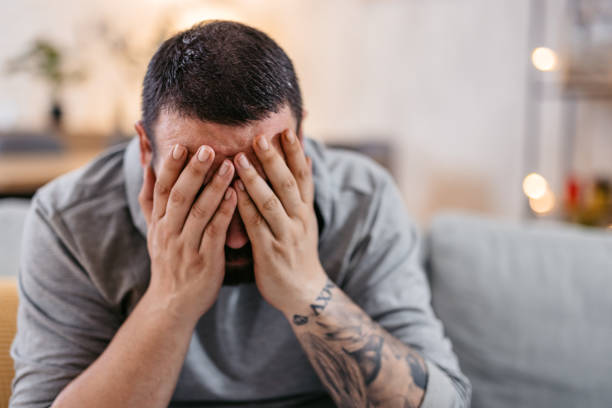Contents
1. The Rise of Horrible Tattoos

Horrible tattoos are a growing concern in today’s society, as more and more people find themselves with ink they regret. From misspelled words to botched designs, the rise of regrettable ink is evident. These tattoos can have a profound impact on individuals, causing embarrassment, shame, and even depression. They may also affect how others perceive them, leading to judgment or discrimination. Fixing or removing horrible tattoos presents its own set of challenges, from financial costs to emotional tolls. However, there are valuable lessons to be learned from these mistakes. By researching tattoo artists, communicating effectively, and carefully considering design choices, individuals can avoid the pitfalls of horrible tattoos in the future.
Horrible tattoos, sadly, are on the rise. These are tattoos that haven’t been done well, often because of poor design or execution by the tattoo artist. They can range from misspelled words and wonky lines to downright cringe-worthy designs. The increasing popularity of tattoos in mainstream culture has led to a surge in demand, but not necessarily a corresponding increase in skilled tattoo artists. As a result, more people are ending up with regrettable ink.
The impact of these horrible tattoos on individuals can be significant. Imagine waking up one day and realizing that the permanent design on your skin is not what you wanted or expected. It can lead to feelings of embarrassment, shame, and even depression. For some, the tattoo may serve as a constant reminder of a mistake or a moment of impulsiveness.
Moreover, these tattoos can affect how others perceive and interact with the individual. In professional settings, visible tattoos that are poorly done may lead to judgment or discrimination. Even in social situations, people may make assumptions based on someone’s tattoos, which can influence relationships and opportunities.
Fixing or removing horrible tattoos is another challenge. Tattoo removal procedures can be expensive, time-consuming, and painful. Some tattoos may not even be fully removable, leaving behind scars or remnants of the original design.
In essence, the rise of regrettable ink highlights the importance of careful consideration before getting a tattoo. It’s crucial to research tattoo artists, choose a design wisely, and be prepared for the long-term commitment that comes with having a tattoo. Otherwise, the consequences of a horrible tattoo can last a lifetime.
2. Avoiding Common Horrible Tattoo Mistakes

Horrible tattoos often happen because of mistakes made by both the tattoo artist and the person getting the tattoo. Let’s look at some of these common mistakes:
1. Spelling Errors: One of the most cringeworthy mistakes is when words are misspelled in tattoos. This can happen if the client doesn’t check the spelling beforehand or if the artist makes a mistake when copying the design. Once the ink is on the skin, it’s there for good, misspelled words and all.
2. Poor Design Choices: Sometimes, people choose designs that seem cool in the moment but don’t think about how they’ll look in the long run. What might be trendy now could become outdated or embarrassing later. It’s important to pick a design that has personal meaning and will still be meaningful in the future.
3. Improper Placement: Where the tattoo is placed on the body is also crucial. Some people might get tattoos in highly visible areas without considering how it could affect their professional or personal life. Others might choose a spot that doesn’t suit the size or shape of the design, resulting in a poorly balanced tattoo.
4. Lack of Research: Both clients and tattoo artists should do their homework before committing to a tattoo. Clients should research the artist’s portfolio and make sure they’re skilled in the style they want. Likewise, artists should take the time to understand the client’s vision and offer guidance if the design needs adjustments.
5. Rushing the Decision: Getting a tattoo should never be a spur-of-the-moment decision. Unfortunately, some people rush into it without fully considering the implications. They might feel pressured by friends or influenced by trends, leading to a tattoo they later regret. Taking the time to think it over and ensuring it’s something you truly want can prevent this mistake.
6. Ignoring Skin Type and Tone: Different skin types and tones can affect how a tattoo looks once it’s healed. Neglecting these factors can result in unsatisfactory outcomes. For example, certain colors may not show up well on darker skin tones, or tattoos on areas prone to stretching or fading, like the hands or feet, may require extra care and consideration.
7. Choosing the Wrong Artist: Not all tattoo artists have the same skill level or artistic style. Choosing an artist solely based on convenience or price can result in a horrible tattoo. It’s crucial to find an artist who specializes in the style you want and has a good reputation for quality work. Looking at their portfolio and reading reviews can help ensure you’re making the right choice.
8. Ignoring Aftercare Instructions: Proper aftercare is essential for ensuring a tattoo heals correctly and maintains its appearance over time. Ignoring aftercare instructions, such as keeping the tattoo clean and moisturized, can lead to infections, fading, and other complications that detract from the tattoo’s quality. Following the artist’s advice is crucial for preserving the integrity of the tattoo.
9. Going Too Small or Too Detailed: Size matters when it comes to tattoos. Going too small or choosing a design with intricate details that are too small to execute properly can result in a messy, illegible tattoo. It’s important to consider the scale of the design in relation to the placement on the body and the capabilities of the artist.
Avoiding these mistakes can help prevent horrible tattoos and ensure that the tattoo experience is positive for everyone involved. It’s important for both clients and artists to communicate openly, double-check details, and take the time to create something they’ll be proud of for years to come.
3. DIY Tattoos Gone Wrong

DIY tattoos, where people ink themselves or their friends at home instead of going to a professional tattoo artist, can lead to horrible tattoos and serious consequences. Here’s why:
1. Infections: DIY tattooing often involves using non-sterile equipment and unsanitary conditions, increasing the risk of infections. The skin can easily get infected if proper hygiene isn’t maintained during the tattooing process. Infections can cause pain, swelling, and even lead to more severe health issues if left untreated.
2. Scarring: Without proper technique and equipment, DIY tattoos can result in scarring. The skin may heal unevenly or develop raised scars, detracting from the appearance of the tattoo. Scars can be permanent and difficult to fix, leaving the person with a reminder of their mistake.
3. Botched Designs: DIY tattooing lacks the skill and precision of professional artists, often resulting in botched designs. Poor line work, shaky hands, and lack of experience can lead to horrible tattoos that look nothing like the intended design. Fixing or covering up these botched tattoos can be challenging and expensive.
4. Regret and Embarrassment: DIY tattoos gone wrong can cause immense regret and embarrassment. People may feel ashamed of their poorly done tattoos, especially if they’re in visible areas like the face or arms. It can affect their self-esteem and confidence, leading to social and emotional distress.
5. Legal and Safety Risks: DIY tattooing may also have legal and safety risks. In many places, it’s illegal to perform tattoos without a license, and individuals who do so may face fines or legal consequences. Moreover, using improper equipment or ink can pose safety hazards and increase the risk of complications during the tattooing process.
Overall, DIY tattoos can have serious and long-lasting consequences, ranging from infections and scarring to legal issues and emotional distress. It’s important to understand the risks involved and seek professional help from a licensed tattoo artist for safe and quality tattooing. Trying to save money or take shortcuts with DIY tattoos is not worth the potential harm and regret it can cause.
4. Cover-Up Challenges

Covering up or removing horrible tattoos can be a tough journey with its own set of challenges. Let’s look at some of these hurdles:
1. Financial Cost: Fixing a regrettable tattoo can be expensive. Whether opting for a cover-up tattoo or laser removal, both options come with a hefty price tag. Cover-up tattoos require skilled artists who can creatively design a new tattoo to camouflage the old one, which may cost as much as or more than the original tattoo. Laser removal sessions are also costly, and multiple sessions are often needed to completely remove a tattoo, adding up to a significant expense.
2. Emotional Toll: Dealing with a horrible tattoo can take a toll on a person’s emotional well-being. It can cause feelings of embarrassment, shame, and regret. Having a constant reminder of a bad decision on one’s body can affect self-esteem and confidence. Additionally, the process of covering up or removing a tattoo can be emotionally draining, as it may involve revisiting painful memories or facing the reality of a mistake.
3. Time and Patience: Both covering up and removing tattoos require time and patience. Cover-up tattoos may need multiple sessions to fully conceal the original design, depending on its size, color, and complexity. Laser removal also takes time, as the skin needs to heal between sessions, and complete removal may take several months or even years. This prolonged process can test one’s patience and resolve.
4. Limited Options: Not all regrettable tattoos can be easily covered up or removed. Factors such as the size, location, and colors of the original tattoo can limit the options for cover-up tattoos or affect the effectiveness of laser removal. In some cases, individuals may have to live with their horrible tattoos or seek alternative solutions, such as cosmetic camouflage makeup.
Navigating the challenges of covering up or removing regrettable tattoos requires careful consideration and perseverance. It’s essential to weigh the financial costs, emotional impact, and available options before deciding on the best course of action. Seeking support from friends, family, or a professional tattoo artist can also provide valuable guidance and encouragement throughout the process.
5. Learning from Mistakes

Regrettable tattoos can teach valuable lessons that help prevent making the same mistakes in the future. Let’s explore some of these lessons:
1. Research Matters: One of the most important lessons from horrible tattoos is the significance of research. Before getting inked, it’s crucial to research tattoo artists, their styles, and their reputations. Checking out their portfolios and reading reviews can help ensure you choose a skilled and reliable artist who can bring your vision to life.
2. Communication is Key: Communication plays a vital role in the tattooing process. It’s essential to communicate clearly with the tattoo artist about your ideas, preferences, and any concerns you may have. Clear communication helps ensure that both you and the artist are on the same page, reducing the likelihood of misunderstandings and resulting in a tattoo you’ll love.
3. Think Before You Ink: Another lesson from regrettable tattoos is the importance of careful consideration before getting inked. Take the time to think about your tattoo design, its significance, and how it will look on your body in the long run. Avoid impulsive decisions and trendy designs that may not stand the test of time.
4. Quality Over Price: Choosing a tattoo artist based solely on price can lead to horrible tattoos. Instead of opting for the cheapest option, prioritize quality and expertise. Remember that a good tattoo is an investment in yourself, and it’s worth paying a little more for a tattoo that you’ll be proud to show off.
5. Acceptance and Growth: Finally, regrettable tattoos can teach lessons about acceptance and growth. While it’s natural to feel regret or embarrassment over a tattoo mistake, it’s essential to learn from the experience and move forward. Use it as an opportunity to become more discerning, resilient, and self-aware in your future tattoo decisions.
By learning from the mistakes of regrettable tattoos, individuals can become more informed, thoughtful, and empowered when it comes to their tattoo choices. Taking the time to research, communicate, and carefully consider design choices can help ensure that future tattoos are ones you’ll cherish rather than regret.
In conclusion, the surge of regrettable ink underscores the importance of thoughtfulness and mindfulness when it comes to getting a tattoo. While the consequences of a horrible tattoo may be lasting, they also offer opportunities for growth and self-reflection. By drawing wisdom from these experiences and applying lessons learned, individuals can ensure that their future tattoos are ones they’ll cherish rather than regret.





